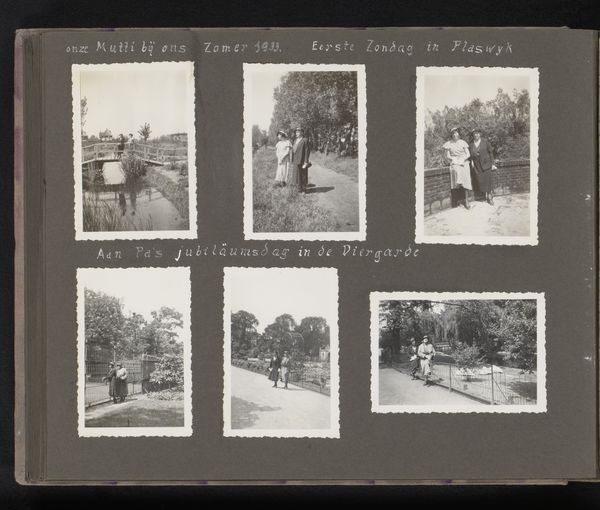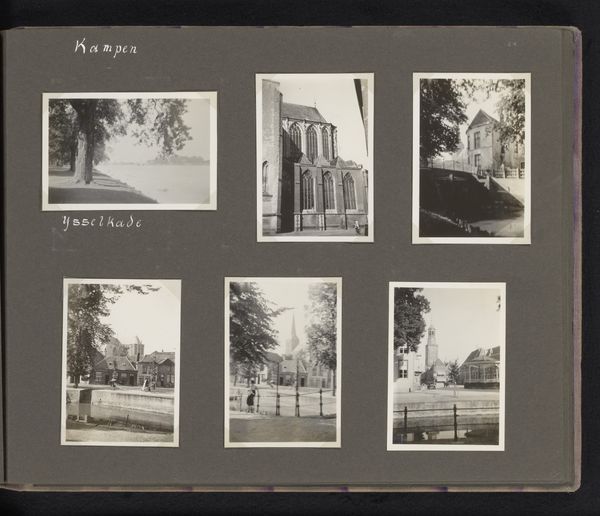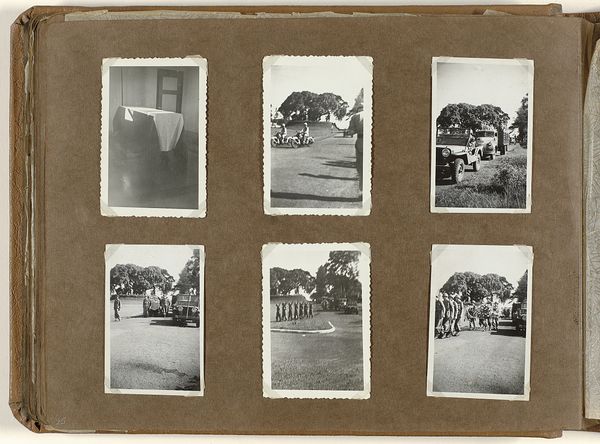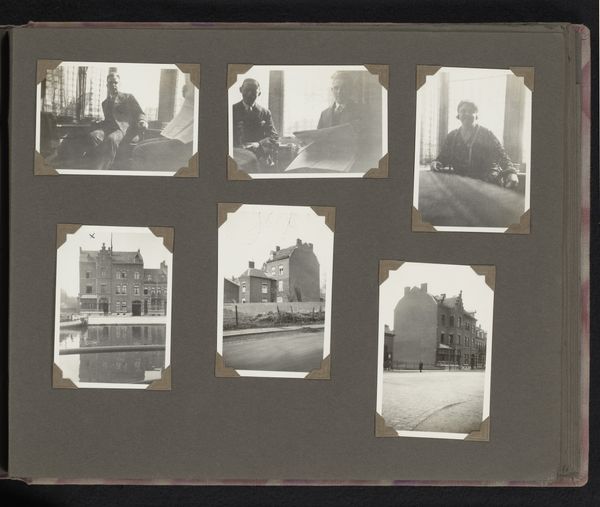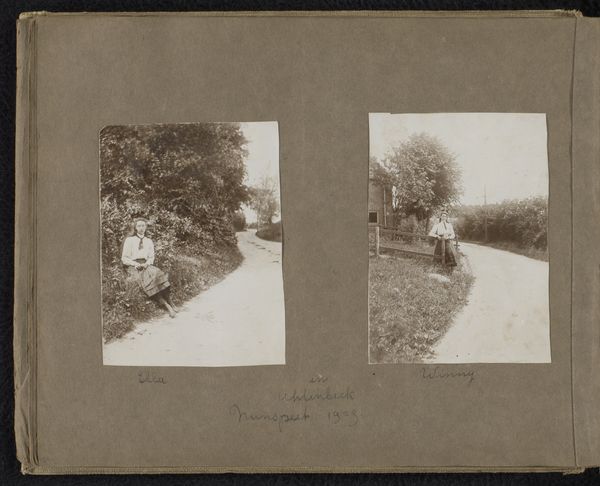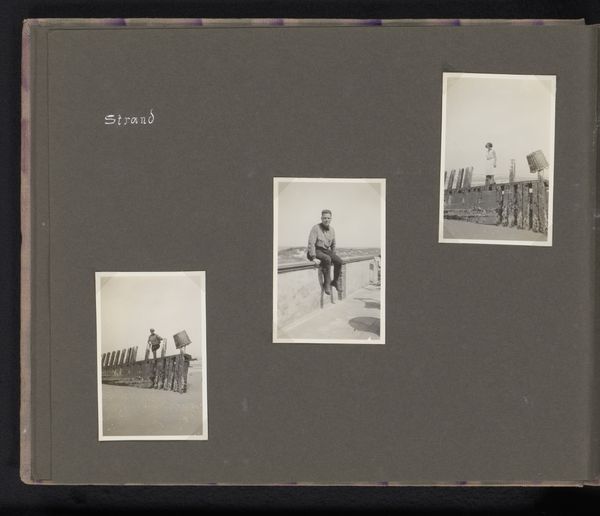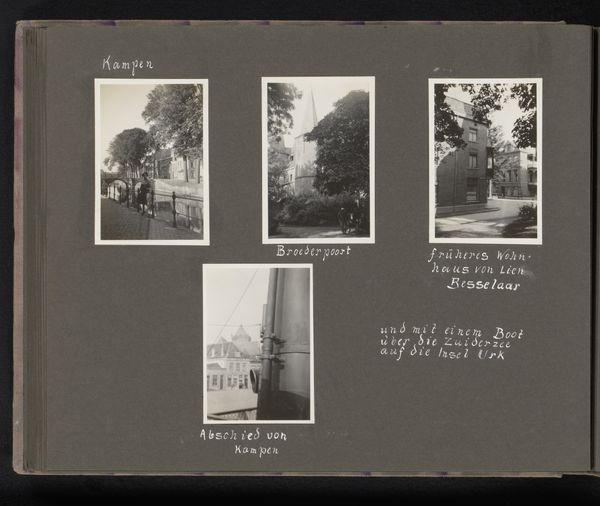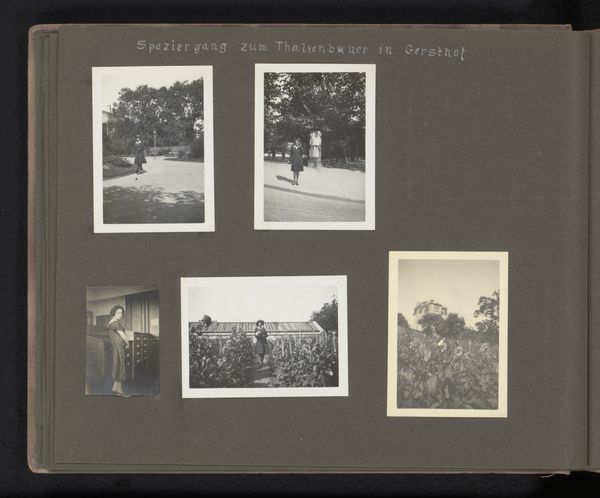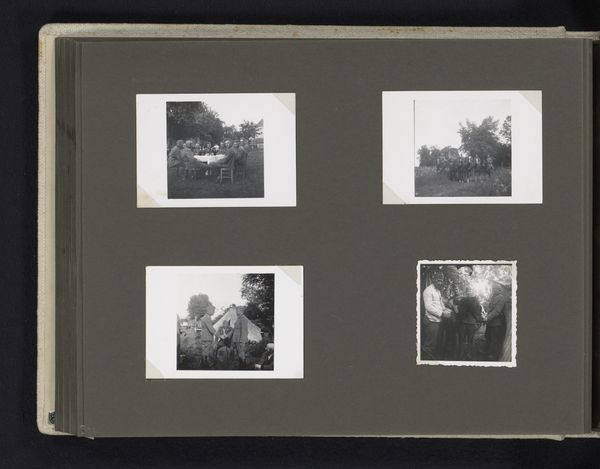
Herman Besselaar, Berti Hoppe en haar moeder in Diergaarde Blijdorp te Rotterdam en op het strand in Scheveningen 1933
0:00
0:00
photography
#
portrait
#
street-photography
#
photography
#
genre-painting
Dimensions: height 236 mm, width 310 mm
Copyright: Rijks Museum: Open Domain
Editor: This is a fascinating page from a photo album by Herman Besselaar, created in 1933. It’s titled "Herman Besselaar, Berti Hoppe en haar moeder in Diergaarde Blijdorp te Rotterdam en op het strand in Scheveningen." The images, presented in monochrome, give off a very documentary feel. What's your perspective on this arrangement of personal photos? Curator: I'm drawn to the materiality of this work, its very status as a collection. Look at the paper quality, the way these images are organized – almost like a photographic study in contrasts between leisure and lived experience. Rotterdam’s zoo versus the beach provides a compelling framework for understanding the work of ordinary citizens. The arrangement itself, the photographer’s intentional selection, what does it communicate about the consumption of experiences during that period? Editor: So, you see this as a commentary on the societal aspects of leisure? I initially just saw snapshots of people enjoying their time. Curator: Not *just* enjoying, but engaging with a system designed for entertainment. Besselaar shows us these subjects engaging directly in their leisure. What labor went into preparing the beach? What technology facilitates documenting the event and reproducing images? Editor: That’s an interesting point; the whole tourism infrastructure is there, but we only see its consumers. So by showing the family in various recreational environments, he’s implicitly referencing that broader system of production. Curator: Exactly. This is an artifact as much as it is an artwork. Besselaar highlights their status through reproduction as a cultural process during the interwar period. What new ideas have emerged for you in our conversation? Editor: I definitely see how the very existence of this photo album speaks to the commodification of leisure and tourism in the 1930s. Curator: And for me, it's always about revisiting assumptions regarding access and control in artmaking, where cultural production takes center stage, reshaping my viewpoint on historical representation and agency within creative processes.
Comments
No comments
Be the first to comment and join the conversation on the ultimate creative platform.
